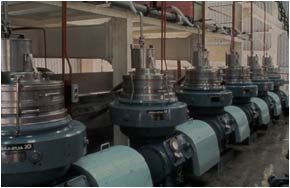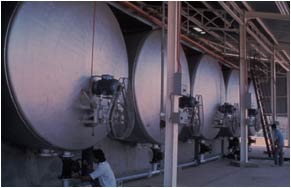There can be no doubt that latex was used by the earliest Mesoamerican tribes since we know that they manufactured balls from dry rubber for the ball game and Torquemada, in “De la Monarquia Indiana” (1615), wrote about their use of latex to waterproof fabrics used for clothes and head coverings. He also mentioned waterproof boots and it is well established that Amazonian natives used to make protective shoes by using their feet as formers. After a series of dippings in latex, with a short drying period between each, a strong shoe could be peeled from the feet, smoked to sterilize it and used as necessary to provide protection against rough ground or insect bites. A century and more later Charles Marie de la Condamine described how natives made rubber bottles and syringes by coating clay cores with several layers of latex, drying between each dipping and then breaking out the core when the required thickness was reached... The name given to the latex gatherers even today is Seringuerio, meaning ‘maker of syringes’, and clearly indicates the importance of this material to their lifestyle. At the end of the 18th century, Silvestre Diaz de la Vega, the Director General of Tobacco in Mexico wrote extensively about the use made of latex in that country. In 1785 his memorandum included the observations that latex is an adhesive and can be used on any textile. Pieces of cloth were covered with up to 10 layers of latex and the material could be used for making capes, cloaks, boots, shoes, carriage tops all without the use of a tailor as the seams were simply cemented together with the latex. He himself designed and made containers to transport mercury from Mexico to Spain. These consisted of two layers of chamois leather bonded together with a latex film – some 20 years before Macintosh produced his eponymous triple-layed material. In 1799 Vega wrote that “latex would become one of the most useful products of the vegetable kingdom” he bemoaned the fact that two centuries had passed since Hernandez described the material and yet not a single step has been advanced in benefit of commerce, medicine or the arts ….” The application of caoutchouc is limited to date to a small number of contrivances which are smeared with it to guard against humidity and a few other items that are used in the land where it exists - all being of little importance and less value”. In 1791 Peal (BP1801) described the preparation of waterproof cloth using a rubber solution in turpentine but included latex in his patent coverage whilst Hancock, from 1824 onwards, occasionally referred to his attempts to use latex for a variety of applications but his attempts to obtain regular supplies of the material were thwarted by its decomposition and auto-coagulation. Goodyear’s one recorded use of the material was actually by one of his assistants who dipped a pair of trousers in latex and wore them for work when the latex had dried. At the end of the day he was stuck to his trousers, the trouser legs were fused together and the whole was firmly adhered to his bench. Goodyear does not describe how he was freed but noted that the adhesiveness of rubber must be an intrinsic property of the material rather than a result of poor manufacturing technique. In 1846 Parkes invented the ‘cold cure’ process whereby rubber-coated fabrics or thin films could be vulcanized using a solution of sulphur chloride and in 1878 Abbott patented the use of sulphur chloride gas which avoided the problems associated with the use, recovery and disposal of solvents. Why then did latex technology in the west lag so far behind that of ‘dry rubber’, particularly since the early dry rubber technology often required that rubber to be dissolved to give, if not latex, at least a solution which could be handled more easily than the raw dry rubber? The first problem to be overcome was latex instability. The analogy to curdled milk has already been mentioned and the causes of the two events are the same – bacteriological attack. As early as 1791 Fourcroy had suggested that latex could be stabilised by the addition of alkali and in 1804 he proposed (unsuccessfully) that some of this stabilised latex should be shipped to France. In 1853 Johnson suggested ammonia as a preservative and, indeed, supplied Hancock with some ammonia-stabilized latex although by this time Hancock was in his 70’s and was pretty well retired. He made no significant reported use of it.
Perhaps the second problem was a simple lack of interest. The ways in which latex was collected in the Jungles of South America or the Congo (the two largest sources of the material) were hardly sophisticated nor were they suited to rapid stabilization of the latex by the addition of a chemical which was difficult to obtain in the jungles of the two countries! Uses for solid rubber were expanding rapidly and consumers would buy all that was on the market. It needed the development of the rubber plantations to provide a clean bulk supply of fresh latex which could then, if necessary, be stabilised and shipped in that form. It should also be remembered that latex coagulation by the addition of a weak acid such as acetic acid was adopted by the Sri Lankan (Ceylonese) plantations around 1898 to give an extremely clean, pale golden coloured natural rubber unlike the brown or virtually black materials available from the wild. Like the alkali stabilization of latex, this process was some 100 years old but, probably for the same reasons, had not been adopted earlier. As the plantation output expanded, demand for clean natural rubber (not latex) soared, and we arrived at the First World War. After the war things looked up for latex and 1920 can be taken as the year in which its potential started to be realised. But this brought the third problem. Field latex, as collected, contains a lot of water. Levels vary depending on the clone and the season but a typical composition might be 30-40% rubber (DRC – dry rubber content), 3-5% non-rubbers and the rest water. It was expensive to ship so much valueless water around the world so research was directed towards increasing the DRC of latex – now normally stabilised with about 0.75% ammonia which was added as a gas from cylinders on the plantation. Several methods were developed but it should be noted that, starting from the same latex, they would yield concentrates with different properties and applications. Concentration methods were:
The earliest attempts to increase the DRC of latex were by creaming – if only because it was observed to occur naturally! If latex is allowed to stand undisturbed it, again like milk, creams, or separates into two layers with the top one being rich in rubber (rubber has a density slightly below that of water). Creaming can be accelerated by warming or by the addition of certain agents such as sodium alginate. Creamed latex typically has a DRC of 60% and a total solids content of 61.5%. It can be seen therefore that it is proportionally much lower in non-rubbers than the initial field latex. Centrifugal concentration was first used in1898 but ‘took off’ in plantations after Uttermark, (in 1923) described in a patent how he had modified a cream separator to produce a latex containing 60% rubber with no additives other than the stabilising ammonia at about 0.75%. This process today is probably the most often used. Electro-decantation was developed by Stamberger and Schmidt in 1937 but never seemed to be a serious challenger to the other methods. It relied on the fact that latex particles carry a negative charge so they will migrate towards a positive electrode and, if the electrolysis is carried out through a semi-permeable membrane, the concentrate will rise to the surface where it can be creamed off. The resulting latex concentrate was claimed to be very similar to centrifuged latex in composition and properties. Evaporation of the water will obviously increase the DRC and this was the process developed by Hauser. The process requires rather more sophistication than simple evaporation as this will cause skin formation on the latex which will ruin its properties. Simplistically the process begins with the addition of a stabiliser followed by controlled evaporation off the surface of a heated revolving drum, the bottom of which is in contact with the latex. It is possible to obtain latex concentrates of 80% or more total solids which have the consistency of paste. The process is reversible although the addition of water to restore the latex has to be carried out, again, with considerable care – hence the name of this latex (and the company which still manufactures it – Revertex... There was then left one final problem. To find a method of vulcanizing latex products that did not require the use of unpleasant chemicals such as sulphur chloride. Although this chemical remains in use today to make a few specific articles it has generally been abandoned in favour of the process known as prevulcanization of the latex. In 1921 it was discovered by Peter Schidrowitz (BP193451, 208235) that the addition of polysulphides to latex followed by controlled heating for a prolonged period of time gave a latex which was visually unchanged from the starting material but, when it was dried and gently heated, it had the properties of a normally vulcanized piece of dry rubber. The process was known as the Vultex process. Further work showed that by using sulphur and adding an accelerator the process could be carried out at (tropical) ambient temperatures and was thus ideally suited for use on rubber plantations where the field latex could be stored in large tanks. The presence of ammonia to preserve the latex does not interfere with the process. The prevulcanized latex could then be converted to a product by one of the processes described later and then gently heated to give the finished product. The chemistry of this process was finally understood in the 1990’s, following work at the Malaysian Rubber Producers’ Research Association (now known as TARRC) in the UK. It was shown using transmission electron microscopy that there was initial crosslinking between the various elastomer chains within each particle of latex and that, on drying to a film, loose ends of the chains, which projected from the surface of each particle, acted like ‘Velcro’ to hold the particles together. Slowly at room temperature, or more rapidly at elevated ones, the chemistry of vulcanization continued with S-S bonds in the polysulphidic crosslinks breaking and reforming. Some of the reformed bonds were inevitably between the entangled polymer ends of different particles and the whole product then became chemically ‘fused’ together. Two particular advantages of vulcanized latex over vulcanized ‘dry’ rubber are:
For the full pictorial story of natural rubber production, click here. |






